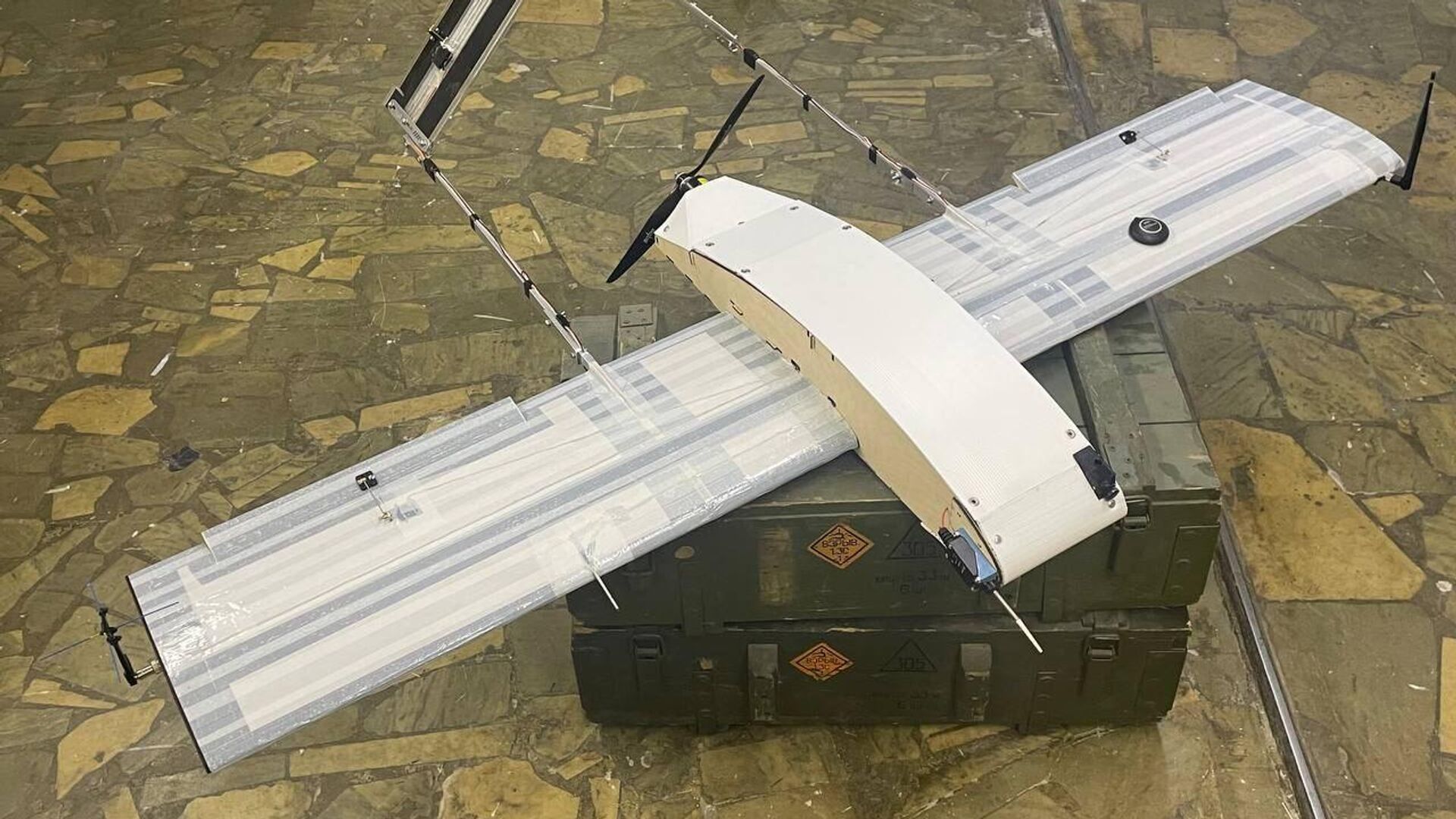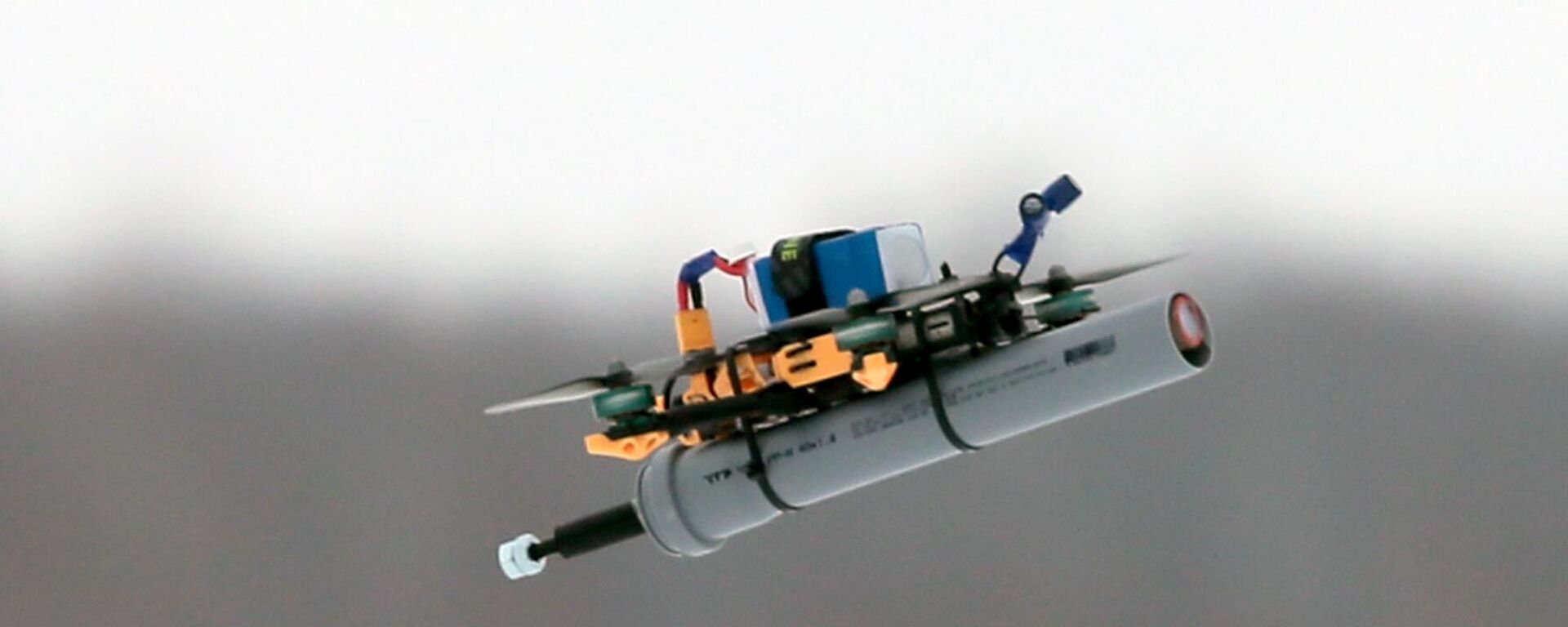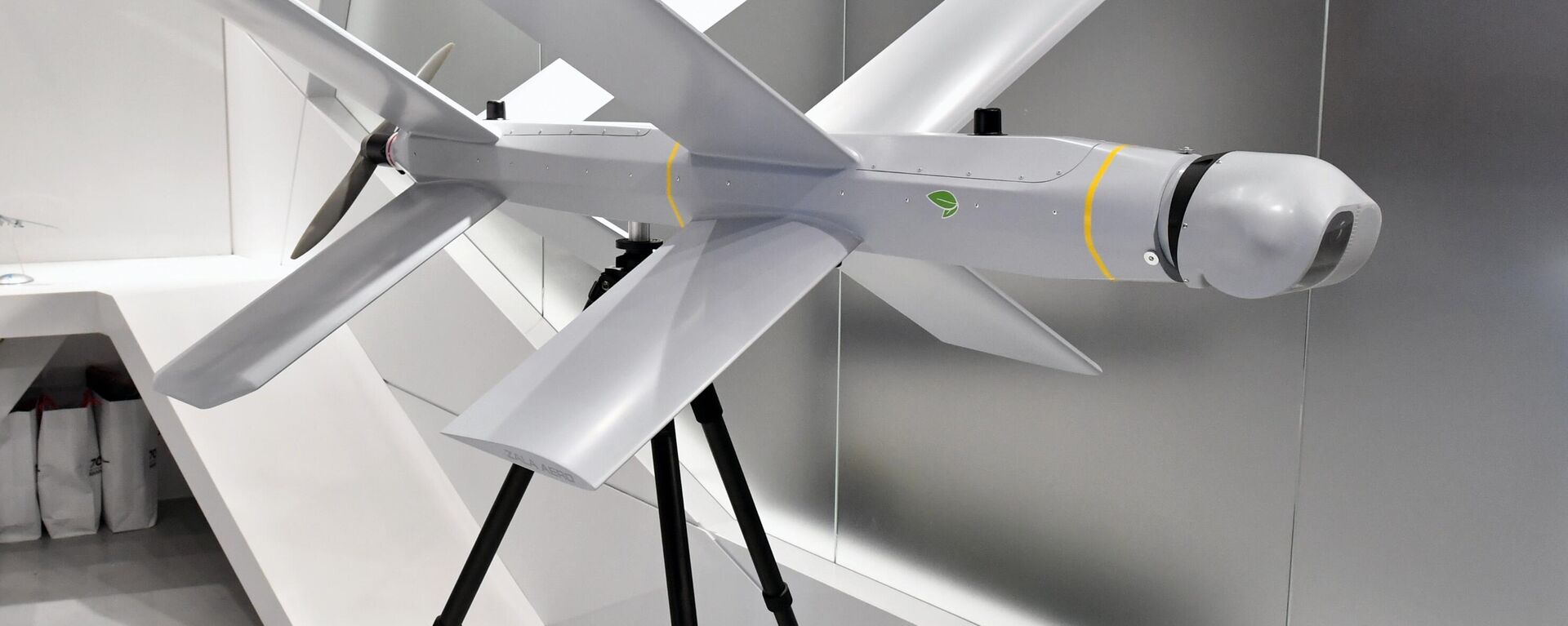Quantity Has Quality All Its Own: How Russia’s Budget Drones Can Wreak Havoc on Ukrainian Lines
13:27 GMT 06.12.2023 (Updated: 13:47 GMT 06.12.2023)

© Photo : Oko Design Bureau
Subscribe
St. Petersburg-based upstart drone design bureau Oko (lit. "Eye") has unveiled a modernized variant of its Privet-82 ("Hello-82") budget fixed-wing kamikaze drone. Sputnik reached out to Oko’s CEO to get a better sense of the drones’ capabilities, and what makes the company tick.
Russian budget-minded drone maker Oko made the news this week by rolling out a modernized variant of its Privet-82 UAV, the Privet-82M1.
The base model Privet-82 features:
30 km range
Flight speed up to 140 km per hour (accelerating to up to 160 km per hour while diving toward targets) using onboard electric motor, and cruising speed of about 90 km per hour.
5.5 kg payload weight, equivalent to that of an 82 mm caliber mortar round, making the drone powerful enough to strike targets ranging from enemy forts and supply depots to artillery and armored vehicles.
Electronic warfare-resistant radio channel and ability to approach targets in radio silence mode.
Low-low price of as little as 110,000 rubles (about $1,200 US) apiece. That’s less than even the budget-minded version of the Lancet drone, the Scalpel, which goes for about 300,000 rubles (around $3,300 US) per drone.
The upgraded Privet-82M1 is the product of extensive testing in the special military operation zone, and features an array of upgrades, including an improved control system, autonomous power supply, more powerful signal repeater system to allow drones to be operated from the safety of a dugout, basement or bunker, remaining charge indicator, new directional antennas, new cold-resistant components, increased toughness, quick-release hood and new, more aerodynamic camera module.
“The drone’s modernization was carried out based on the experience of its use, and based on feedback we received from special forces,” Oko CEO and co-owner Vadim Zhernov told Sputnik.
“The drone got a new ground station, which, first of all, is autonomous, more convenient to use and allows, in particular, to operate the drone from behind cover. For instance, all the antennas and repeaters can be placed on the roof of a five-story building, while operators stay safe in the basement and control the drone’s operation from there,” he explained.
The M1 model also got a new facelift, Zhernov said, increasing the drone’s volume, and “allowing it to gain altitude much more quickly and escape the range of small arms fire.” Also new is an ammo cocking mechanism that allows drones’ payload to be made ready for detonation after they have crossed into enemy airspace, increasing operator safety.
The old Privet-82 model has had good success targeting strategic targets, Zhernov said, pointing to the drone’s successful use against strongpoints, warehouses, artillery, and French AMX wheeled tanks.
Rolling Back Prices
A significant selling point of Oko’s drones is their low cost, which, in theory, allows for more to be fielded simultaneously (making them more difficult to intercept) and a lower cost ratio against enemy forces and equipment.
“From the start, when we were developing the Privet-82, we set ourselves the task that the drone should use exclusively civilian production technologies. All of the components of our product can be obtained in any large city by civilian contractors… Civilian companies produce components for us. There are a lot of them. Therefore, the price is accordingly very low. Also, we do not use any specialized electronics, but generally available consumer electronic [parts], which also greatly reduces the price,” Zhernov explained.
Admittedly, there are still areas for improvement, the businessman said, pointing out that the company is yet to find domestic electronics producers, but does plan for the localization of electronics sources as production increases. Furthermore, the company has yet to sign a contract for the drones’ series delivery to the military, although “significant movement” has taken place in this direction, and Oko expects to make an announcement on this score “before the New Year.”
Asked about future plans, Zhernov said they include creating an upsized version of the Privet-82 and to modernize the UAV further.
“Also, we are currently testing a small reconnaissance UAV on the line of contact, and based on the experience of its use, will probably prepare a larger modification to obtain the standard combination with the ZALA Lancet,” the Oko CEO added, referring to the Russian drones which wreaked havoc on Ukrainian positions and helped quash its counteroffensive this summer.
On top of that, there’s the Privet-120, Oko's ambitious experimental petrol-powered drone designed to carry payloads of up to 20 kg to ranges of up to 300 km. That project awaits additional financing, Zhernov said.





